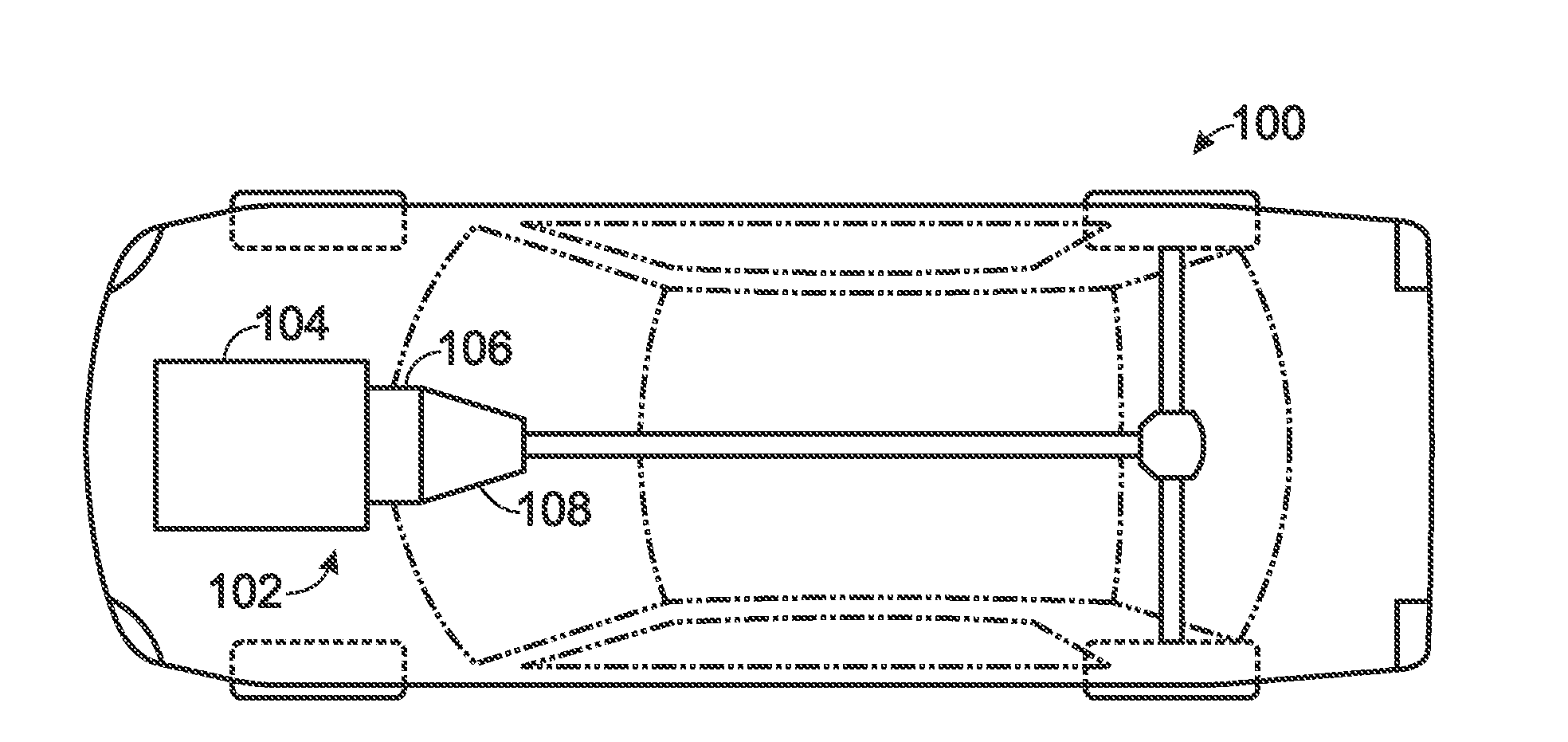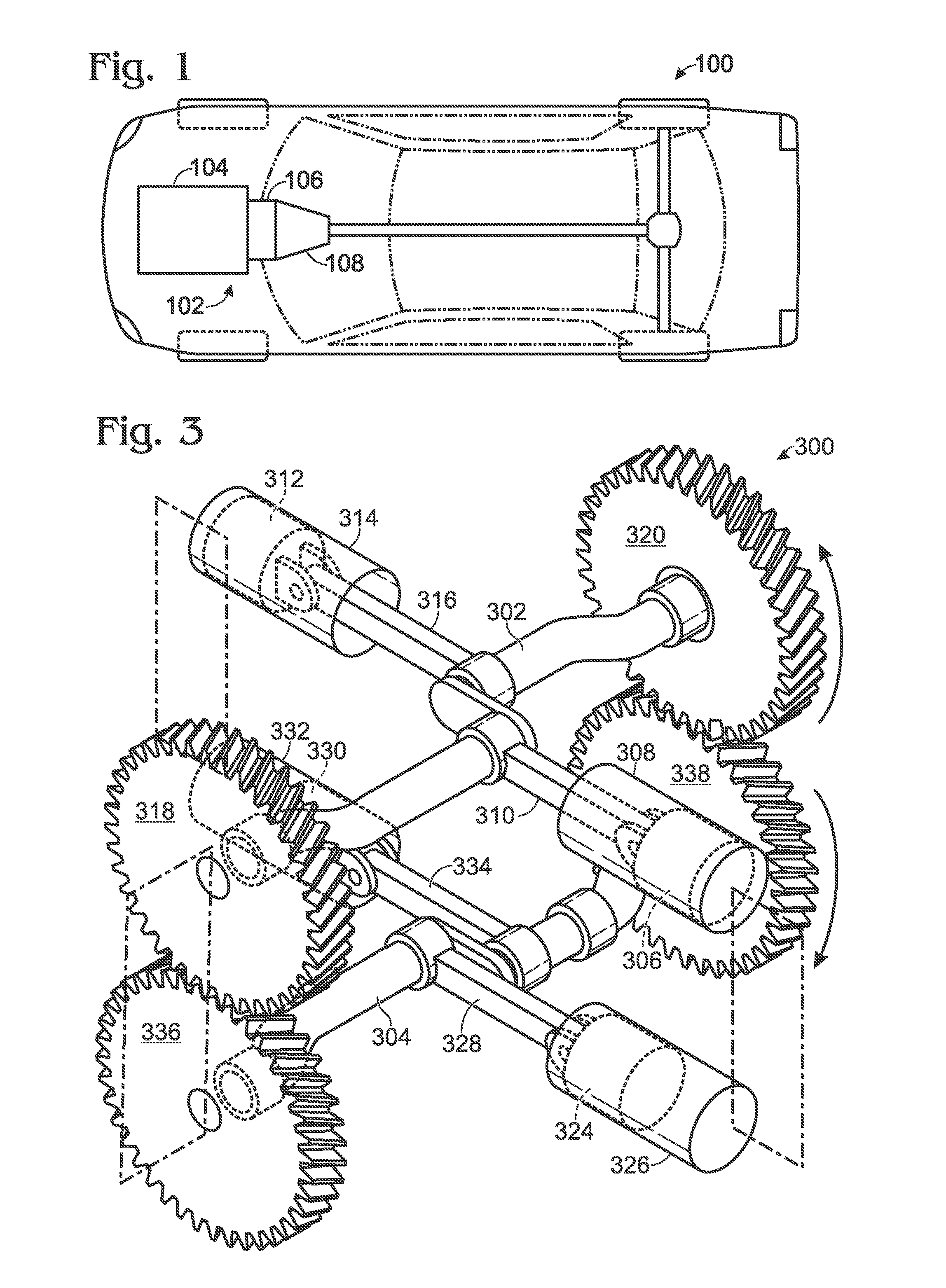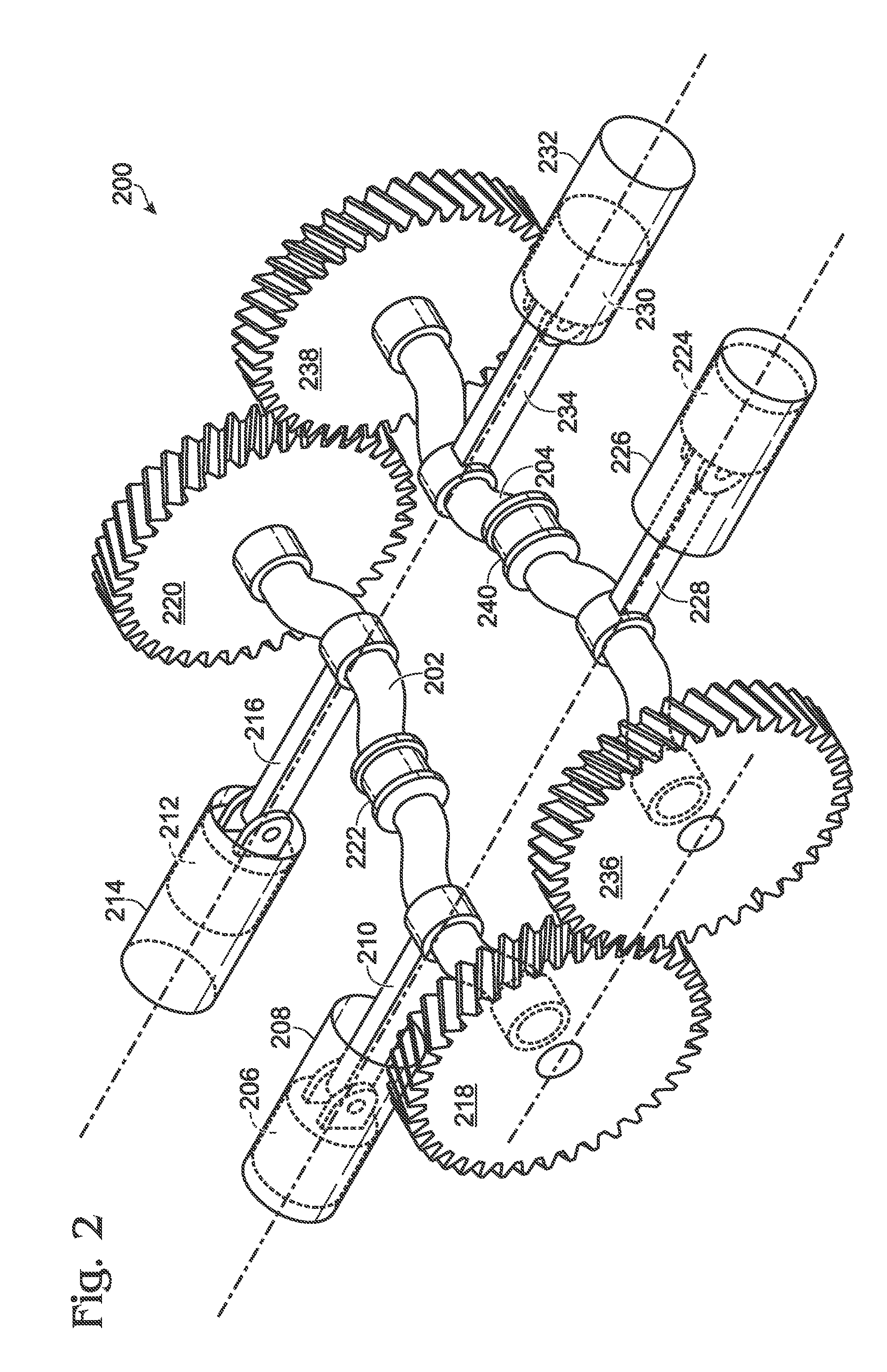Dual crankshaft engine
a crankshaft engine and crankshaft technology, applied in the direction of reciprocating piston engines, positive displacement engines, combustion engines, etc., can solve the problems of increasing the cost, weight, inertia, and friction of the engine, and the reaction torque imposed on the powertrain support structure (e.g., the engine mount) may be reduced, and the noise and vibration sensed inside the passenger compartment of the vehicle may be reduced.
- Summary
- Abstract
- Description
- Claims
- Application Information
AI Technical Summary
Benefits of technology
Problems solved by technology
Method used
Image
Examples
Embodiment Construction
[0017]The present application describes various embodiments of a dual counter-rotating crankshaft engine that includes horizontally oriented and opposing cylinders in what may be referred to as a “boxer” engine configuration. The “boxer” concept may include modules of two cylinders that are located on opposite sides of an engine in approximately linear alignment with each other, The piston motions inside those opposing cylinders may be “minor images” of each other so that the forces of acceleration of the two pistons are equal and opposite and thereby cancel each other. When this pair of pistons is coupled to a single crankshaft, the associated connecting rods may be coupled one hundred eighty degrees opposite from each other; and therefore the two cylinders cannot be truly collinear with each other. The width of the connecting rods and the thickness of the crankshaft web that connects the two crankpins forces one cylinder to be installed farther forward than the other cylinder. The...
PUM
 Login to View More
Login to View More Abstract
Description
Claims
Application Information
 Login to View More
Login to View More - R&D
- Intellectual Property
- Life Sciences
- Materials
- Tech Scout
- Unparalleled Data Quality
- Higher Quality Content
- 60% Fewer Hallucinations
Browse by: Latest US Patents, China's latest patents, Technical Efficacy Thesaurus, Application Domain, Technology Topic, Popular Technical Reports.
© 2025 PatSnap. All rights reserved.Legal|Privacy policy|Modern Slavery Act Transparency Statement|Sitemap|About US| Contact US: help@patsnap.com



